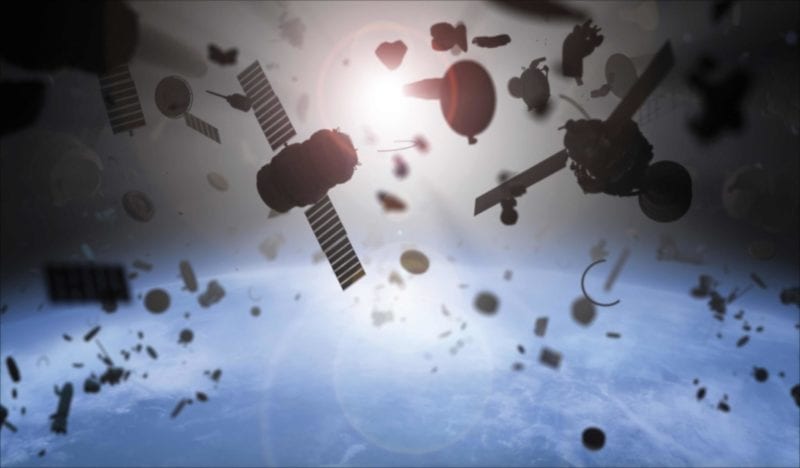Latest News

Photo: Via Satellite
Space debris is a real problem. There is currently a lot of debris, and it’s hard to detect with current methods. A collision with a small piece could have a massive impact — not only to the affected satellite, but to the entire space environment, by causing further debris.
GEO
In Geosynchronous Orbit (GEO), it remains challenging to calculate the precise volume of debris. It is estimated that around 64 percent of objects tracked by the U.S. Space Surveillance Networkis fragmentation debris, with a further 14 percent inactive satellites and 11.5 percent spent rocket bodies. This doesn’t consider the smaller objects that currently cannot be tracked. The public catalogues only include a GEO and GEO crossing object population of around 1 meter and above in size. We believe that if we were to track objects between 20 centimeters and 1m, this would account for a 50 percent increase in the number of objects being tracked in the GEO arc.
It has long been assumed that a collision with a smaller object would only have a minor impact on the satellite affected and to the surrounding environment. However, it is clear from more recent studies that a collision with an object as small as 20cm could cause a significant debris-generating event, which would further exacerbate the problem within GEO. If we can’t track those objects, we cannot get warnings when a collision is likely, so we cannot take preventative action. It is also only a matter of time before such a collision will take place, considering the sheer quantity of debris coupled with the growing number of satellites in orbit.
LEO
Low Earth Orbit (LEO) is the subject of a great deal of interest right now, with a huge number of launches planned for the coming months and years. At the same time, there is much concern about how these mega constellations and cubesats are likely to impact the space environment. This is further exacerbated by the fact that many of these satellites are launched by companies without prior satellite operation expertise.
LEO is already the most debris-filled region. As these constellations continue to grow, a collision in the LEO region would have a massive impact for all other orbits, making space activities impossible not only for LEO, but also for MEO and GEO satellites.
Ensuring proper and effective management will therefore be crucial to reducing the risk of adding to debris in LEO. This means LEO operators, along with operators in other orbits, need to adhere to best practices for responsible behavior, to ensure the fleet is well managed — and to reduce the potential of collision.
Reducing the Problem of Debris
There are a number of organizations looking at solutions to remove debris from space. In the meantime, as operators, we need to ensure we are not adding to the debris. One of the easiest ways is to ensure the use of space traffic management systems that seek the best, most actionable, and timely collision avoidance data, techniques, and mitigation strategies available. Additionally, operators in all orbits should share key satellite operations information elements including planned maneuvers, spacecraft characteristics, and Radio Frequency (RF) information. If used effectively, this information can go a long way to drastically reduce the chance of collision between two orbiting satellites.

Mark Dickinson is the chairman of the Space Data Association and Inmarsat’s Space Segment deputy CTO and VP.
Get the latest Via Satellite news!
Subscribe Now